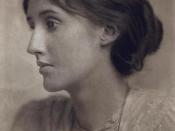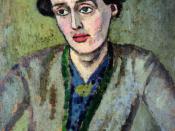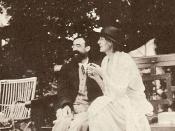This book was published in 1925. And this is her first great novel or her greatest claim to immorality. This novel shows how remarkably the novelist has succeeded in adopting "the stream-of-consciousness technique". The action is limited temporarily to a single day in life of its chief character, Mrs. Dalloway, with a few other people. As the heroine shops or talks, dresses or eats, we are inside her mind, seeing her as she sees herself, sharing her memories and knowing the people she knows or has known through her own eyes.
In the novel the major characters are only five and they stand out from the rest with a distinctive pre-eminence. It is they alone who reveal their thoughts to the reader in prolonged and repeated interior monologues as well as in conversation. And we find these five major characters moving round each other in two concentric circles, Clarissa, Peter Walsh and Richard Dalloway in the one Septimus and Rezia Warren Smith in the other.
And then around of these two circles we find a ring of minor characters such as, Sally Seton, Lady Bruton , Hugh Whitbread, Elizabeth Dalloway and the important foil to Clarissa, Doris Kilman.
The entire action takes places in one day. It moves between Mrs. Dalloway's preparation for her party in the morning and her presiding over it in the evening on the same day. Within this narrow frame we are also to know her life from girlhood to her present age of fifty. The story is gradually unfolded by means of the contacts she makes with others.
The whole of the novel, Mrs. Dalloway, conveys poignantly Virginia Woolf 's response to success in reflecting how, in a big city, people's path cross and dramas go on within range of dramas,


